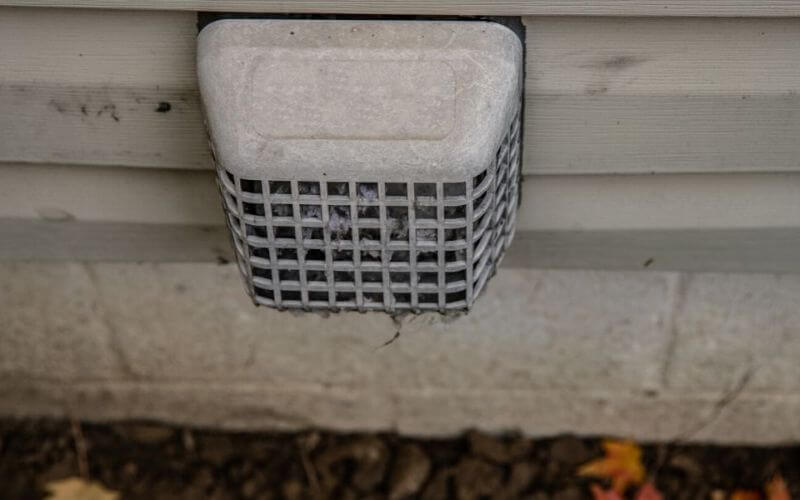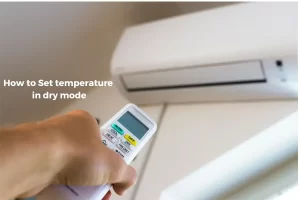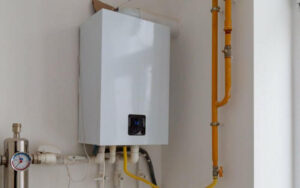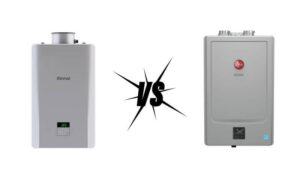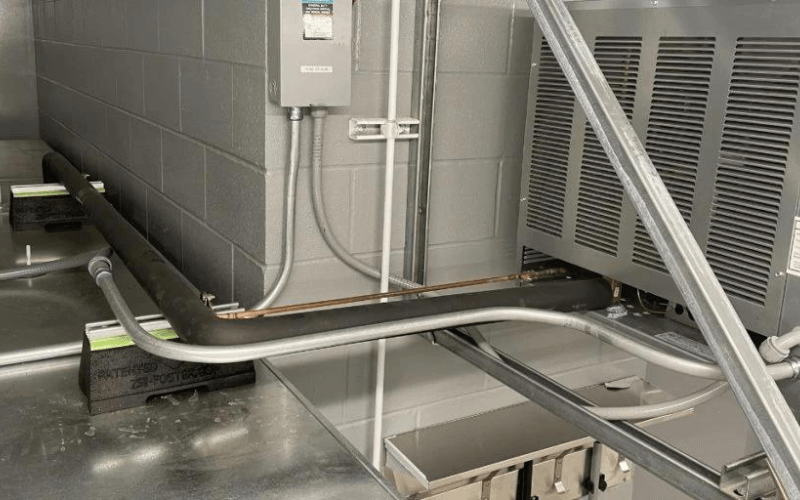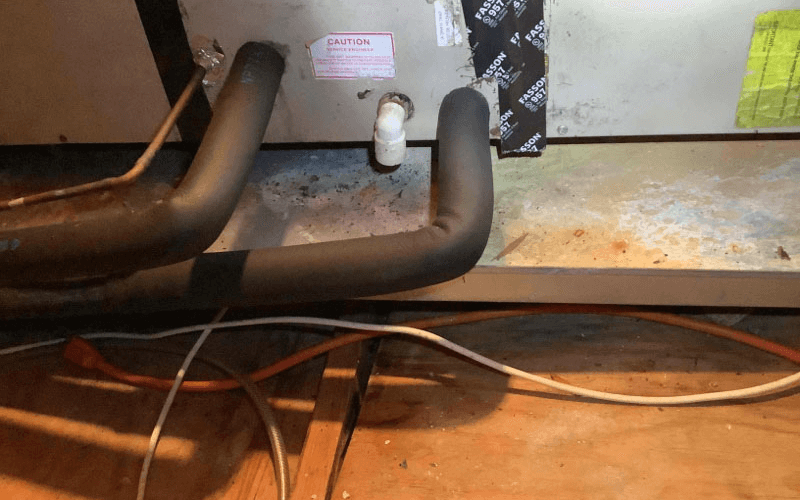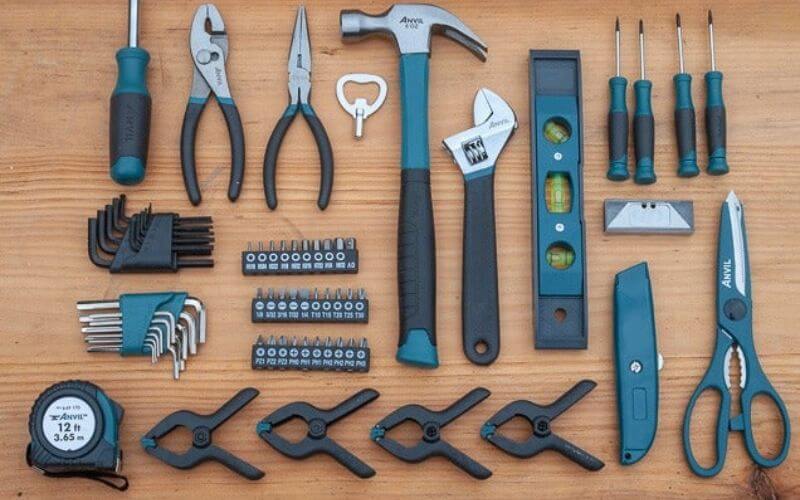A dryer is one useful way to reduce the stress of household chores. Dryer vents aid in the prevention of fires by removing excess, unwanted heat generated during the drying process of the dryer. Don’t worry if your dryer vent leaks water; we asked the experts how to fix it.
If you notice a leak in your dryer vent, first inspect the pipe to which it is connected. After that, clean them, fill the holes and shorten the dryer’s ventilation duct length. Creating a space between the pipes and replacing worn components is necessary.
Dust and debris clog dirty vents, preventing air and water vapor from moving through the tubes. If you want to learn more about leaking dryer vents, keep reading for more information.
Table of Contents
ToggleAlso check: Where To Run The AC Condensate Drain Line
How Do Dryer Vents Function?
You might be wondering what the vents indicate. Dryer vents are critical. Because if your dryer lacks vents, all the hot air and moisture will enter your home. This can result in mold, rot, and costly air conditioning and dehumidification systems. The same result would be expected if the vent was clogged to the outside. The dryer vent is connected to the ventilation hood on the dryer’s back.
For dryer ventilation, aluminum pipes should be used. Many old vinyl and plastic tubes are no longer used due to fire hazards and changing building requirements.
Pipes connect the dryer to the attic and are routed outside through the crawlspace floor or along the walls.
Flexible aluminum bends and foil tape are used to connect the hoses. Pipe ends are typically capped to prevent heat and moisture from rising to the roof or causing damage to the exterior walls.
Why is There Water Leaking From The Dryer Vent?
Water leaking from the dryer can occur for a variety of reasons. Possible explanations include:
The Flapper Has Been Broken:
The dryer vents exhaust moisture and heated air outside. To protect the exhaust pipe, the flap opens when air escapes and closes when there is no activity. Rain or snow can quickly enter the dryer opening if the flap does not close properly. On the other hand, flappers can become stuck, allowing moisture to accumulate and condensate, resulting in leaks. Always check that the flapper is operational.
Outside Temperature:
Condensation may form around the outside and edges of the dryer exhaust pipe in frigid temperatures. If not adequately insulated, this condensation can drip, causing water damage and the appearance of leaks.
To avoid this, insulate the entire length of the exhaust pipe. If you have a problem with your plumbing, heating, ductless air conditioning, or HVAC system, you should have it evaluated and repaired by a professional.
There Are Holes In The Ventilation Duct:
A faulty or cracked ventilation system can result in water loss from the dryer. Condensation can collect inside the dryer due to broken pipes.
If there are any holes or cracks in the duct, they should be replaced. Strong cooling and heating tape can be used to repair small holes.
How to Repair a Dryer Vent Water Leak:
Pipe leaks can occur for a variety of reasons. We recommend contacting a professional to help troubleshoot the issue if the breather pipe is damaged. Repairing cracks on your own can aggravate the problem and cause further damage to your dryer. You might even get hurt.
If the problem is caused by bent or damaged flaps, thoroughly inspect the flaps to ensure they open and close properly. If it does not close properly, it must be replaced, and you must get the assistance of a professional. If the water collection system isn’t working, throw out the condensate pump and scrub all hoses with a stiff bristle brush. You may need to contact a professional if you have a problem beyond your ability to resolve.
How do I get rid of condensation in my dryer vent?
It is critical to avoid condensation formation. If the clothes are left on, they will become damp and may need to be rewashed, which will take longer. Here’s how to clean the condensation from your dryer vent. The vent filter should be cleaned.
The simplest way to reduce condensation in your dryer is to clean the vent filter. If the lint filter is clogged, the dryer cannot expel all the hot air during the cycle, resulting in condensation. It is recommended that the extractor fan be cleaned after each drying cycle. To clean the dryer vent, remove and dispose of it in the trash. If necessary, a vacuum cleaner can be used. Put it back in the dryer once it’s clean.
The Exhaust Duct Should Be Cleaned:
The exhaust ducts and pipes must then be cleaned. As most manufacturers recommend, give the vent a thorough cleaning at least twice a year to avoid lint buildup.
Exhaust Duct Cleaning Is Required:
The exhaust ducts and pipes must then be cleaned. As most manufacturers recommend, give it a thorough cleaning at least twice a year to avoid lint buildup.
Check That The Vent Is In The Proper Location:
If cleaning the lint filter and vent system does not resolve the condensation issue in your dryer, the next step is to ensure that the vents are properly positioned. Because the vent runs through the attic, it can become hot and be reflected into the dryer.
Due to the fire risk, dryer vents are not typically installed in the attic. However, in some older homes, this is the standard location. Ducts may run through exterior walls or under the house, lengthening the vent pipes and potentially causing additional condensation.
Before venturing outside, ensure your attic or garage vent is appropriately positioned. If this is the case, see if you can shorten the vent to make it easier to exit. You may be able to circulate air through windows rather than through walls.
Make Use Of A Booster Or A Vent Flap:
You may be able to reduce condensation by installing dryer vent flaps. Vent flaps are intended to vent hot air as the dryer cycle progresses. At the end of the cycle, the flap closes.
Check to make sure your dryer vent flap is not jammed or stuck. If the valve breaks, it must be replaced, which is neither difficult nor expensive. If your dryer lacks vent flaps, consider purchasing them and installing them in your vent system.
Also check: Dehumidifier Blowing Hot Air? Here’s What to Do
Is It Necessary To Seal The Dryer Vent Pipe?
The dryer exhaust duct connects the inside of the house to the outside. If the vent cover does not seal properly, it is equivalent to leaving a window partially open. Insects, rats, and other pests that enter your home through air vents pose a less obvious threat.
Conclusion:
If you notice water leaking from the dryer vent, inspect the vent pipe and thoroughly clean it. If the part needs to be replaced, use a new one to avoid further deterioration.

